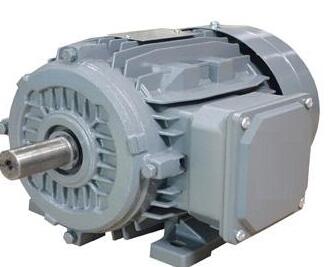
We have introduced in detail the advantages and maintenance of high-efficiency and energy-saving motors before. It can be seen that this motor has many advantages. Not only can it be started directly, but it can also be replaced with an asynchronous motor. So what are the differences between high-efficiency energy-saving motors and variable frequency motors? Let the editor systematically analyze it below!
First of all, let me introduce in detail the advantages of high-efficiency and energy-saving motors, as follows:
High efficiency and energy saving: The new motor has no iron loss and no magnetic damping, and its efficiency can be greatly improved. Field tests on industrial sawing machines have shown that compared with traditional systems with traditional motors (induction motors with gear transmission), their systems can save 15% of electricity under working conditions. Practical applications by users have proven that 1.5 kilowatt and 3 kilowatt diesel power stations using this technology can save up to 40% in fuel compared with traditional generators.
Lightweight and material-saving: The new motor breaks through the iron core structure that the stator of traditional motors must have, and realizes that the stator has no iron core. Therefore, it is small in size and only a fraction of the weight of traditional motors.
High reliability: The new motor has no excitation, no brushes, no iron core, improved insulation performance, waterproof, moisture-proof, dust-proof, reliable operation, low temperature rise, improved environmental adaptability under conditions, and traditional motors are resistant to damage The experiment generally lasts for 500 hours, and the motor can last up to more than 5,000 hours.
1. High-efficiency and energy-saving motors improve the operating efficiency of the motor itself through the manufacturing process, or in other words, improve the energy conversion ratio.
2. Frequency conversion energy saving refers to saving electricity by adjusting the motor speed. Instead of increasing the energy conversion ratio, it decreases because the loss of the frequency converter is increased.
3. Frequency conversion speed regulation is mainly used in situations where the load changes, and its energy saving effect is very obvious. A typical example is the constant pressure water supply system. Simply put, its energy-saving principle is to change the frequency and then the output power according to needs. For example: only 5kW of power is needed. If the speed is not adjusted, the motor may output 10kW of power, wasting 5kW.
4. For situations where the load is stable, that is, where speed regulation is not required, using a frequency converter will reduce the overall efficiency and waste electricity.
5. For occasions with large load changes, both high-efficiency energy-saving motors and variable-frequency motors can save power. However, variable-frequency speed regulation can save a much larger proportion of electrical energy. Compared with ordinary motors of the same power, the energy saving of high-efficiency and energy-saving motors can generally only be improved by a few percentage points.
6. Motors powered by frequency converters can be called variable frequency motors, which are different from ordinary motors. Frequency converters directly drive ordinary motors, which will cause damage to the motors.
7. The energy-saving principles of the two are different. They can be used at the same time. Both technologies need to be vigorously developed and promoted.



















